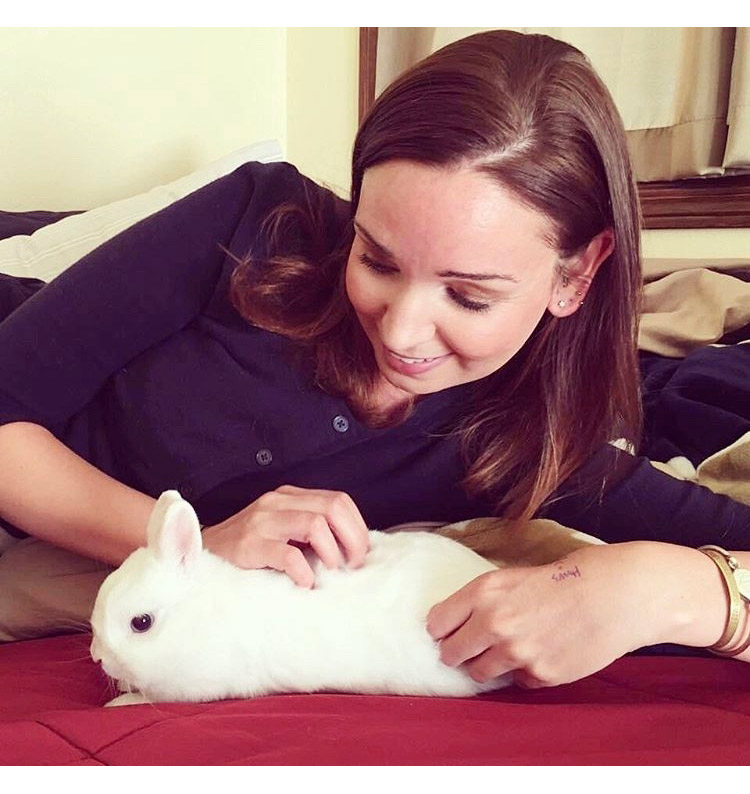
Dustin Kieschnick and Katie Lawlor from The Oxford Centre for Animal Ethics explain how prolonged exposure to traumatic content, such as animal cruelty, can affect emotional and mental health and how to balance awareness with the potential negative effects of overexposure.
Social media is an important tool for animal welfare organisations. However, while social media allows them to engage their social media followers with their campaigns, frequently, this involves depicting and documenting animal brutality, and for those social media followers, prolonged exposure to traumatic content can lead to mental health conditions such as compassion fatigue, burnout, and even Post-Traumatic Stress Disorder (PTSD).
When we are confronted with a threat to the life of an animal or learn of cruelty toward them, we may experience an immediate and overwhelming sense of trauma.
What makes something traumatic?
The Psychiatric Diagnostic Manual (DSM) describes trauma as exposure to an event that is sustained as physically and/or emotionally harmful and that has potential lasting adverse effects on our lives. Trauma can occur through experiencing something directly, witnessing something happen to someone close to us, or being the result of repeated exposure to the distressing details of an event or series of events.
Many clinicians are beginning to make the case that this criterion in the DSM should include harm to companion and wild animals as well.
Exposure to trauma can take several forms, including through photo or video depictions. In particular, social media platforms often provide less-filtered, more raw depictions of events accompanied by graphic imagery. While we may be witnessing at a distance via our electronic devices, perhaps from the comfort of our homes, we are nonetheless exposed to traumatic content. It is from this first viewing that we can begin to envision ourselves in these horrendous scenarios, and it begins to impact us both mentally and emotionally.
The complexity of trauma
The impact trauma can have on us is influenced by our own histories of trauma, our ethics and values, and our sense of connectedness to the affected. As we witness an animal’s suffering, perhaps we put ourselves in their situation. Perhaps we feel safe in their company and want to ensure they are safe and protected, too.
Perhaps we feel most at peace in nature and believe that peace should extend to them, especially in their natural habitats. Perhaps we have trained extensively in a related profession and feel painfully inadequate when we can’t use our talents and resources to save and heal them.
What makes trauma so challenging is that the cognitive processes in our brains that enable us to take action are often not straightforward. Rather, we may experience numerous detrimental psychological effects that can act as blocks in our attempts to help.
The role our emotions play
 While we begin to feel meaning and fulfilment again through our reinstated commitment, we may also begin to experience a myriad of emotions related to the traumatic events we are once again exposed to. It can be helpful to know the terminology psychologists use to explain the two types of emotions you might be feeling:
While we begin to feel meaning and fulfilment again through our reinstated commitment, we may also begin to experience a myriad of emotions related to the traumatic events we are once again exposed to. It can be helpful to know the terminology psychologists use to explain the two types of emotions you might be feeling:
The first are referred to as natural emotions. These are the feelings universally experienced by humans: sadness, loneliness, isolation, fear, hopelessness, anger, confusion, disbelief, etc. While reflection on the traumatic event will always evoke natural emotions to some extent, they should become more bearable with time.
The second type of emotions we may experience following a traumatic event are known as manufactured emotions. These feelings are derived from our personal interpretation of the event. For example, if we believe that we should have been able to save the animal or that we didn’t do enough to protect them, then we will most likely feel shame, worthlessness, and several other damaging feelings.
Mental health in a digital age
If this digital landscape wasn’t difficult enough to navigate, there is emergent research indicating what is termed a dose-response relationship in trauma. This means that the more you are exposed to traumatic content, the more at risk you are of being impacted.
While some individuals are able to recover and heal from exposure on their own without any treatment interventions, others may experience acute and persistent aspects of mental health conditions such as compassion fatigue, burnout, and Post-Traumatic Stress Disorder (PTSD).
For this community, vicarious traumatisation can also occur. This is when trauma symptoms that arise from repeated exposure to traumatic media content can lead to disheartening changes in one’s worldview, ability to emotionally regulate, questioning of self-identity, and several other damaging symptoms.
Care
To navigate this challenging digital landscape, it is crucial to balance awareness with the potential negative effects of overexposure. By recognising the impact of trauma, the animal welfare community can adopt strategies to promote mental well-being, such as virtual peer support groups.
A study with US-based veterinarians highlighted the value of consistent, accessible, and supportive communities where thoughts and feelings are normalised and validated, fostering camaraderie and empathy.
When we’ve been traumatised by exposure to animal cruelty on social media, there are three effective and proactive steps we can take to mitigate our risk of lasting distressing impacts.
First and foremost, we need to understand that viewing this type of violent content can immediately affect our thoughts, moods, and behaviour. Particularly, we may find ourselves wanting to react impulsively, whether that’s further engaging or turning away.
A beneficial coping skill we can implement in real-time is to pause for a brief check-in. You can ask yourself the following questions:
- Do you have any intense feelings after viewing this content?
- Do any aspects of this material remind you of previous upsetting events in your life – both personally and/or professionally?
- Are you finding yourself preoccupied by what you saw hours and days after you first viewed it?
- Are you experiencing any uncomfortable physical symptoms in response to what you saw, such as pain, tension, irritability, or restlessness?
This exercise can help you cultivate a deeper awareness of your personal response to traumatic imagery.
Second, if you responded yes to any of these questions, give yourself time and space to process—and then release—what you witnessed. There are several healthy ways to do this: journaling; talking to a trusted loved one or colleague; spending time in nature; exercise These can be especially healing.
Third, establish a strategy for putting boundaries on your involvement with graphic campaigns or programming while finding a balance with those that inspire and motivate you.
Together, these three steps can sustain your commitment while keeping you grounded and in control of your interactions.
Conclusion
While social media can connect us to the causes we care about, we need to be aware of the psychological components of involvement in animal welfare. The impact of trauma exposure is undeniably real. However, healing and unburdening can be achieved with a community of compassionate and dedicated individuals who are committed to helping others as well as the animals they care about.

About the Authors
Dustin Kieschnick (above right) and Katie Lawlor (above left) presented an earlier version of this paper at the Annual Oxford Animal Ethics Summer School on Animals and the Media: Communicating Ethical Perspectives on Animals, held at Merton College, University of Oxford, August 7-10, 2023: Animals and Media – Oxford Centre for Animal Ethics.
The Oxford Centre for Animal Ethics is an independent centre pioneering ethical perspectives on animals through academic research, teaching, and publication. The Centre comprises more than 100 academic Fellows worldwide.
More information on the authors and their research can be found at www.oxfordanimalethics.com.
![]()




You must be logged in to post a comment.